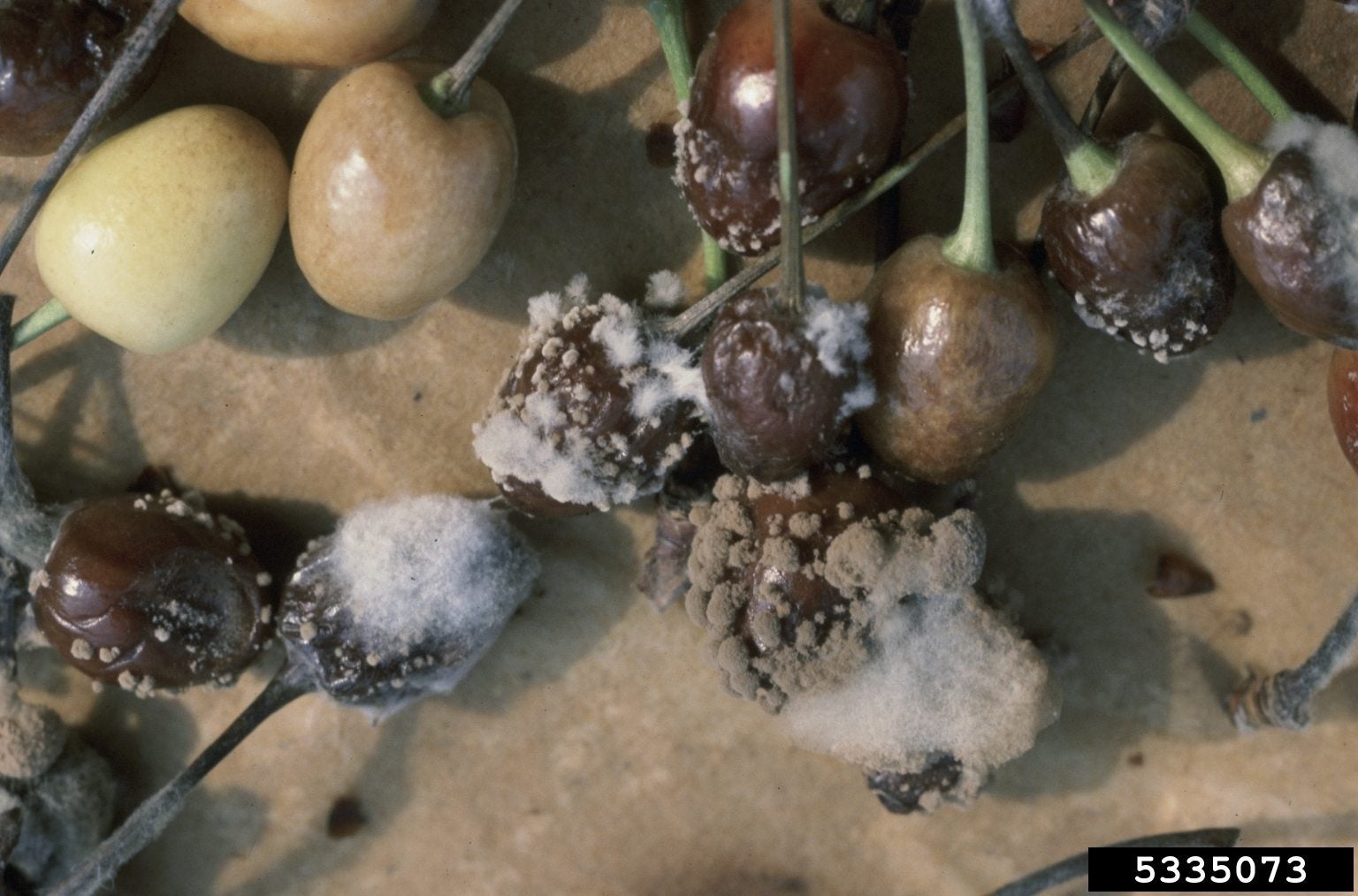Cherries With Brown Rot: Controlling Cherry Brown Rot Symptoms


Brown rot in cherry trees is a serious fungal disease that infects stems, blossoms and fruit. It may also infect ornamental cherry trees. This nasty fungus, which also affects apricots, peaches, plums and nectarines, reproduces quickly and can soon reach epidemic proportions. Controlling cherry brown rot isn’t easy and requires careful attention to sanitation and timely application of certain fungicides. Read on to learn more about cherry brown rot treatment.
Symptoms of Cherries with Brown Rot
The first symptoms of cherries with brown rot are browning of blossoms and small brown spots on ripening fruit, followed by death of small twigs. Infected blossoms often drop off the tree and gummy cankers appear on twigs between healthy and diseased areas. Fruit remaining on the tree may become mummified. The spores spread in damp weather, when you may see clumps powdery, brownish-gray spores on infected flowers and fruit.
Controlling Cherry Brown Rot Treatment
Here are some tips for the management of brown rot in cherry trees in the landscape: Sanitation: Pick up fallen fruit around the tree and rake all other plant debris to decrease the number of spores. Remove any mummified cherries that remain on the tree in early spring. Pruning: When pruning cherry trees in winter, remove any twigs that have died as a result of brown rot. Prune all branches with cankers. Fungicides: If signs of brown rot appear after sanitation and pruning, a fungicide may prevent infection. Brown rot in cherry trees must be sprayed with fungicides at two separate times, as follows:
- Spray fungicides for brown rot in cherry trees when blossoms first begin to open. Repeat according to label recommendations until the petals drop.
- Spray the trees when fruit is ripening, generally two to three weeks before harvest. Repeat according to label recommendations until the fruit is harvested.
Use only fungicides labeled for the particular type of tree. Some products are safe to use on ornamental cherries but unsafe for edible cherries. Also, products registered for use on peaches or plums may not be safe or effective for controlling cherry brown rot. Fungicides for cherry brown rot treatment will be more effective if you continue proper sanitation and pruning. Note: Any recommendations pertaining to the use of chemicals are for informational purposes only. Chemical control should only be used as a last resort, as organic approaches are safer and more environmentally friendly
Gardening tips, videos, info and more delivered right to your inbox!
Sign up for the Gardening Know How newsletter today and receive a free copy of our e-book "How to Grow Delicious Tomatoes".

A Credentialed Garden Writer, Mary H. Dyer was with Gardening Know How in the very beginning, publishing articles as early as 2007.
-
 Terrifically Tubular Flowers For Hummingbirds: 9 Tube-Flowered Plants To Attract Hummers
Terrifically Tubular Flowers For Hummingbirds: 9 Tube-Flowered Plants To Attract HummersGrowing tubular flowers for hummingbirds helps you create the optimum feeding conditions for your winged friends. Here are nine tubed delights for hummers
By Tonya Barnett
-
 How To Grow Hydroponic Tomatoes For Fresh Indoor Harvests – No Soil Required
How To Grow Hydroponic Tomatoes For Fresh Indoor Harvests – No Soil RequiredLearning how to grow tomatoes in water is easy and allows you to harvest fresh-home-grown produce in every season without any mess.
By Ellen Wells